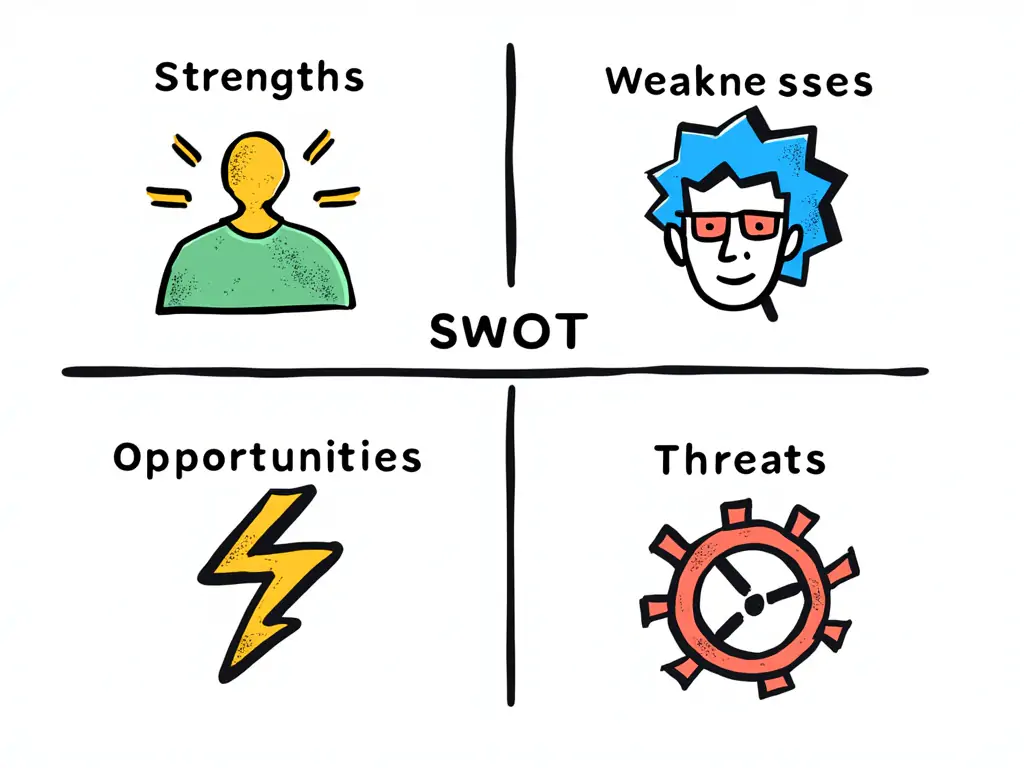Startups face a myriad of challenges, but the most critical one is understanding the market they’re entering. Without a solid grasp of the market landscape, customer needs, and competition, even the most innovative idea can fail. In this comprehensive guide, we will dive deep into market research for startups, covering every aspect from identifying your target market to conducting a competitive analysis. This guide will equip you with the tools, strategies, and knowledge you need to position your business for success.
Why Market Research is Vital for Startup Success
Market research is the foundation of any successful business, but it’s especially critical for startups. Unlike established businesses, startups don’t have a customer base or brand reputation to lean on. They must enter the market with a clear understanding of who their customers are, what their competitors are doing, and how they can meet customer needs in a unique way.
What is Market Research for Startups?
Market research is the process of gathering, analyzing, and interpreting data about your market, your competitors, and your customers. It allows startups to make informed decisions about their product, pricing, marketing strategies, and overall business model. The goal is to identify market opportunities, assess risks, and find ways to differentiate your startup in the marketplace.
For a startup, market research involves a combination of qualitative research (e.g., interviews, focus groups) and quantitative research (e.g., surveys, data analysis). By understanding customer behavior, market trends, and competitive dynamics, startups can make smarter decisions that lead to success.
The Importance of Understanding Your Target Market
Your target market is the group of people most likely to buy your product or service. Without understanding your target market, your marketing efforts will be inefficient, and you’ll struggle to gain traction. Knowing your target market helps you create a customer persona, tailor your marketing messages, and build a product that meets their needs.
Understanding your market is not a one-time event. It requires ongoing research and adjustments as market conditions change. Trends evolve, customer preferences shift, and new competitors enter the market, making continuous market research essential for long-term success.
How Market Research Helps Startups Identify Opportunities
Market research is a startup’s secret weapon. It provides the insights needed to spot new opportunities before your competitors. Whether it’s an emerging trend, an underserved customer segment, or a gap in the market, market research can help you identify where to focus your efforts.
Why Ignoring Market Research Can Lead to Startup Failure
Many startups fail because they rush to market without a clear understanding of who their customers are or how they will compete. Without thorough market research, startups are essentially flying blind. They might invest time and money into a product that nobody wants, or they could enter a market that’s already oversaturated.
Market research mitigates these risks by providing data-driven insights that guide decision-making. It helps startups avoid costly mistakes and position themselves for success from the start.
Startup Market Analysis: Key Steps
Market analysis is a deeper dive into understanding your market. It involves assessing the size of the market, its growth potential, and the competition. A well-conducted market analysis will give you the information you need to develop a solid business plan and pitch to investors.
How to Conduct a Thorough Market Analysis for Startups
A comprehensive market analysis involves several key steps:
- Define the Market: Clearly identify the industry your startup operates in and the specific segment you’re targeting.
- Estimate Market Size: Use data to estimate the total number of potential customers in your market. This can be done using industry reports, census data, and market research tools.
- Analyze Market Growth: Is your market growing, shrinking, or staying stagnant? Understanding growth trends is critical for long-term planning.
- Evaluate Competitors: Identify your key competitors and assess their strengths, weaknesses, and market positioning.
- Identify Barriers to Entry: What are the challenges of entering this market? Are there high costs, regulatory hurdles, or strong competition?
Market Analysis Methods: Qualitative vs. Quantitative
Market research can be broadly divided into qualitative and quantitative methods. Both are essential for a comprehensive understanding of the market.
- Qualitative Research: This includes interviews, focus groups, and observational studies. It provides deep insights into customer needs, motivations, and pain points. For startups, qualitative research helps in understanding why customers might choose your product over others.
- Quantitative Research: This involves surveys, polls, and data analysis. It provides statistical insights into customer behavior, market trends, and competitor performance. Quantitative research is particularly useful for startups that need to measure market size, growth rates, and customer preferences.
Steps to Analyzing a Startup’s Market Size and Growth Potential
Understanding your market size and growth potential is critical for building a sustainable business. Start by gathering data from industry reports, government publications, and market research databases. Look at historical data to identify growth trends and use it to forecast future market conditions.
Once you have a clear picture of the market size, segment your market based on factors like demographics, geography, and customer needs. This will help you identify niche markets and areas where your startup can thrive.

Identifying Key Market Segments for Startups
Segmenting your market allows you to target specific groups of customers with tailored marketing messages and products. Without market segmentation, your marketing efforts may be too broad, leading to wasted resources.
Using Demographic and Psychographic Data for Segmentation
Demographic segmentation divides your market based on characteristics like age, gender, income, and education. For example, if you’re launching a fitness app, your target audience might be young adults with an interest in health and fitness.
Psychographic segmentation goes deeper, dividing your audience based on lifestyle, values, interests, and personality traits. Understanding your customers on a psychological level helps you create products and marketing strategies that resonate with their needs and desires.
How to Define and Narrow Down Your Target Audience
Start by analyzing the characteristics of your ideal customer. Ask questions like:
- What problem does your product solve for them?
- What are their purchasing habits?
- What motivates them to buy?
Use this information to create a detailed customer persona that represents your ideal target audience. The more specific you are, the easier it will be to craft marketing messages that appeal to that group.
Understanding Customer Behavior for Startups
Customer behavior is the study of how individuals make purchasing decisions. For startups, understanding customer behavior is crucial for creating products that people actually want to buy.
Analyzing Consumer Buying Patterns
One of the most important aspects of understanding customer behavior is analyzing buying patterns. This includes identifying how often customers buy products like yours, what factors influence their decision-making, and what drives brand loyalty.
Using Customer Insights to Shape Startup Strategies
Customer insights provide valuable information about customer preferences, needs, and pain points. Startups can use these insights to shape their product development, marketing strategies, and overall business direction. For example, if you learn that your target audience values sustainability, you can incorporate eco-friendly practices into your product design and marketing.

Tools for Gathering Customer Data
Gathering customer data is easier than ever, thanks to a wide range of digital tools and platforms. These tools allow startups to collect, analyze, and interpret customer data in real time.
The Role of Surveys, Focus Groups, and User Interviews
Surveys, focus groups, and interviews are traditional methods for gathering customer feedback. Surveys allow you to collect quantitative data from a large group of people, while focus groups and interviews provide deeper insights into customer attitudes and preferences.
How Startups Can Leverage Online Analytics for Customer Insights
Online analytics tools like Google Analytics, Hotjar, and SEMRush provide valuable data about customer behavior on your website. These tools help startups understand how customers interact with their website, which pages they visit, and what actions they take before making a purchase. This information is critical for optimizing your website and improving the customer journey.
Market Trends and How They Impact Startups
Market trends refer to the general direction in which a market is moving. For startups, staying on top of market trends is essential for remaining competitive and adapting to changing customer needs.
The Role of Market Trends in Startup Success
Market trends can make or break a startup. A new trend can create opportunities for startups to introduce innovative products, while a declining trend can signal the need for a pivot. Startups that are able to spot and act on market trends are better positioned for long-term success.
Identifying Emerging Trends in Your Industry
To identify emerging trends, startups should regularly monitor industry news, attend trade shows, and follow thought leaders in their niche. Tools like Google Trends and industry reports can also help identify which trends are gaining traction.
Using Trend Analysis to Predict Market Changes
Trend analysis involves studying historical data to forecast future market conditions. By analyzing patterns in customer behavior, market growth, and industry developments, startups can make informed predictions about where the market is heading.
Staying Ahead of Competitors by Analyzing Industry Trends
Competitor analysis is not a one-time event. To stay ahead of the competition, startups must continuously monitor industry trends and adapt their strategies accordingly.
How to Spot Disruptive Trends and Act on Them
Disruptive trends are those that shake up the market and force businesses to adapt or risk becoming irrelevant. Startups that are quick to act on disruptive trends, such as new technologies or shifts in consumer preferences, can gain a competitive advantage.
Adjusting Business Strategies in Response to Market Trends
Once you’ve identified a trend, the next step is to adjust your business strategy. This could mean launching a new product, targeting a different customer segment, or changing your marketing approach.
Competitive Analysis for Startups
Competitive analysis is the process of identifying and evaluating your competitors. For startups, this involves understanding who your competitors are, what products or services they offer, and how they position themselves in the market.
Why Competitive Analysis is Crucial for Startups
Startups operate in a highly competitive environment, where understanding the strengths and weaknesses of competitors is critical for success. By analyzing your competitors, you can identify opportunities to differentiate your product, improve your pricing strategy, and gain market share.
How to Identify Your Competitors and Understand Their Market Position
To identify your competitors, start by researching your industry and identifying other businesses that offer similar products or services. Look at their website, social media presence, customer reviews, and marketing strategies to understand how they position themselves in the market.
Using SWOT Analysis to Outperform Competitors
A SWOT analysis (Strengths, Weaknesses, Opportunities, Threats) is a powerful tool for evaluating your competitors. By analyzing their strengths and weaknesses, you can identify areas where your startup can excel. For example, if a competitor has strong branding but poor customer service, you could focus on offering superior customer support as a way to differentiate your business.

Competitive Intelligence Gathering Techniques
Gathering competitive intelligence involves collecting and analyzing data about your competitors to gain insights into their strategies and performance.
Tools for Competitor Research and Market Positioning
There are several tools available for competitive intelligence gathering, including:
- SEMRush: Provides insights into your competitors’ website traffic, keywords, and backlinks.
- Ahrefs: A powerful tool for analyzing competitor SEO strategies.
- BuzzSumo: Helps you identify the most popular content in your industry and understand what topics resonate with your audience.
How to Monitor Competitor Marketing Strategies
Monitoring your competitors’ marketing strategies involves tracking their advertising, social media activity, content marketing, and promotions. Tools like Mention and Brandwatch can help you stay informed about what your competitors are doing online.
Understanding Market Demand for New Businesses
Market demand refers to the total amount of a product or service that customers are willing to buy. For startups, understanding market demand is critical for determining whether there’s enough interest in your product to support a viable business.
How to Evaluate Market Demand for Your Startup’s Product or Service
To evaluate market demand, start by conducting surveys, analyzing industry reports, and studying customer feedback. Look for patterns in customer behavior, such as what products they buy, how often they make purchases, and what factors influence their decisions.
Market Demand vs. Market Saturation: How to Navigate the Balance
Market saturation occurs when there are too many competitors offering similar products, leading to reduced demand. Startups must navigate the balance between meeting market demand and avoiding markets that are oversaturated.

Demand Forecasting for Startups
Demand forecasting is the process of predicting future demand for your product or service based on historical data and market trends.
Tools to Predict Market Demand and Future Trends
Several tools can help startups forecast demand, including:
- Google Trends: Provides insights into what topics are gaining popularity.
- Tableau: A data visualization tool that helps you analyze and forecast demand.
- Salesforce: A CRM platform that includes demand forecasting features.
How to Adjust Your Startup Strategy Based on Market Demand Insights
Once you have a clear understanding of market demand, you can adjust your product development, marketing, and pricing strategies to meet customer needs. For example, if demand for a certain feature is high, you might prioritize its development in your product roadmap.
Market Entry Strategies for Startups
Entering a new market is one of the most challenging aspects of launching a startup. A well-planned market entry strategy can make the difference between success and failure.
How to Develop a Market Entry Strategy for Startups
Developing a market entry strategy involves several key steps:
- Identify Your Market: Clearly define the market you’re entering and the customers you’ll target.
- Understand Barriers to Entry: Identify any challenges or obstacles, such as high costs, regulatory requirements, or strong competition.
- Choose Your Market Entry Method: Decide whether to enter the market through direct sales, partnerships, or franchising.
Evaluating Market Barriers and Risks
Startups must carefully evaluate the risks of entering a new market. This includes understanding legal and regulatory hurdles, market saturation, and the cost of customer acquisition.
Choosing the Right Market Entry Approach for Your Startup
There are several ways to enter a market, including:
- Direct Sales: Selling your product or service directly to customers through your website or sales team.
- Partnerships: Collaborating with established companies to gain access to their customer base.
- Franchising: Expanding your business by allowing others to operate under your brand.

Go-to-Market Strategies for Startups
A go-to-market strategy is a plan for how a startup will launch its product or service and gain traction in the market.
Steps to Launching Your Product Successfully
Launching a product involves several key steps:
- Market Research: Conduct thorough research to understand your target audience and competitors.
- Product Development: Build a product that meets the needs of your target market.
- Marketing and Sales: Develop a marketing plan to promote your product and generate sales.
Market Timing: When is the Best Time to Enter?
Timing is critical for market entry. Launching too early can lead to product failures, while launching too late can result in missed opportunities. Startups should monitor market trends and customer demand to determine the optimal time to enter the market.
Using SWOT Analysis to Understand Your Market
A SWOT analysis is a tool that helps startups evaluate their strengths, weaknesses, opportunities, and threats.
How to Perform a SWOT Analysis for Your Startup
To perform a SWOT analysis, start by identifying your startup’s strengths (e.g., unique technology, experienced team), weaknesses (e.g., lack of funding, limited resources), opportunities (e.g., emerging trends, new customer segments), and threats (e.g., competitors, regulatory changes).
Using SWOT to Position Your Startup in the Market
By understanding your startup’s strengths and weaknesses, you can position yourself in the market more effectively. For example, if you have a strong product but limited brand recognition, you might focus on building brand awareness through targeted marketing campaigns.
Real-Life Examples of Successful SWOT Analyses for Startups
Many successful startups have used SWOT analyses to guide their business strategies. For example, Airbnb identified an opportunity in the market for affordable, short-term rentals and used its strengths (a strong community and user-friendly platform) to capitalize on this opportunity.

Identifying Market Opportunities for Startups
Market opportunities are the areas where a startup can grow and succeed. Identifying these opportunities requires careful market research and analysis.
How to Identify New Market Opportunities
Start by looking for gaps in the market where customer needs are not being fully met. This could be an underserved customer segment, a product improvement, or a new market trend.
Finding Niche Markets for Your Startup
Niche markets are small but profitable segments of the market. By focusing on a niche market, startups can avoid direct competition with larger companies and build a loyal customer base.
Capitalizing on Untapped Market Segments
Startups that are able to identify and capitalize on untapped market segments can gain a competitive advantage. For example, Dollar Shave Club entered the market with a subscription-based model for affordable razors, targeting a niche segment of customers who were dissatisfied with traditional razor prices.
Using Data to Uncover Market Opportunities
Data is a valuable tool for uncovering market opportunities. By analyzing customer behavior, market trends, and competitor performance, startups can identify areas where they can innovate and grow.
Leveraging Market Research Reports to Spot Opportunities
Market research reports provide valuable insights into industry trends, customer preferences, and competitor strategies. Startups can use these reports to identify new opportunities for growth and expansion.
The Role of Competitive Benchmarking in Identifying Opportunities
Competitive benchmarking involves comparing your startup’s performance to that of your competitors. By identifying areas where your competitors are underperforming, you can find opportunities to differentiate your product and capture market share.

Niche Market Strategies for Startups
Niche markets are often overlooked by larger companies, but they can be a goldmine for startups. A niche market strategy involves targeting a specific segment of the market with tailored products and marketing messages.
How to Find and Dominate a Niche Market
To find a niche market, start by identifying a group of customers with unique needs that are not being fully met by existing products. Once you’ve found your niche, focus on building a product that solves their specific problems and create marketing messages that resonate with them.
Identifying Niche Segments That Fit Your Business Model
Your business model should align with the needs of your niche market. For example, if you’re targeting a niche market of eco-conscious consumers, your business model should include sustainable practices and environmentally friendly products.
Building a Niche Market Strategy for Long-Term Success
A successful niche market strategy involves focusing on customer satisfaction, building brand loyalty, and continuously innovating to meet the changing needs of your niche market.
Case Studies of Startups that Successfully Entered Niche Markets
Many successful startups have built their businesses by focusing on niche markets. For example, Warby Parker targeted a niche market of customers who wanted affordable, stylish eyeglasses and built a loyal following by offering a unique value proposition.
Market Penetration and Expansion Strategies
Market penetration is the process of gaining a foothold in an existing market, while market expansion involves entering new markets to grow your business.
How to Achieve Market Penetration for Your Startup
To achieve market penetration, startups must focus on increasing brand awareness, improving customer acquisition, and offering competitive pricing.
Pricing Strategies to Penetrate the Market
Pricing is a key factor in market penetration. Startups can use aggressive pricing strategies, such as offering discounts or free trials, to attract new customers and gain market share.
Building a Customer Base with Limited Resources
Startups often have limited resources, so building a customer base requires creative marketing strategies. This could include leveraging social media, partnering
with influencers, or offering referral programs to incentivize customers to spread the word.
Expansion Strategies for Scaling Your Startup
Once you’ve gained traction in your initial market, the next step is to expand into new markets. This could involve entering new geographic regions, targeting different customer segments, or launching new products.
How to Enter New Markets While Minimizing Risk
Entering a new market is risky, but startups can minimize risk by conducting thorough market research, building a strong go-to-market strategy, and testing their product with a small group of customers before a full launch.
Expanding into International Markets: Key Considerations
Expanding into international markets requires careful planning and research. Startups must consider factors like cultural differences, local regulations, and logistics when entering new countries.

Evaluating Market Risks for Startups
Every market has its risks, and startups must be prepared to evaluate and mitigate those risks to succeed.
How to Identify and Mitigate Market Risks
Start by identifying the most significant risks in your market, such as economic downturns, regulatory changes, or shifts in customer preferences. Once you’ve identified these risks, develop strategies to mitigate them, such as diversifying your product offerings or building a strong financial safety net.
Common Market Risks Startups Face
Some common market risks for startups include:
- Economic Instability: A downturn in the economy can reduce customer spending and slow business growth.
- Regulatory Changes: Changes in laws or regulations can create new barriers to entry or increase operating costs.
- Technological Disruptions: New technologies can disrupt the market and make your product or service obsolete.
Risk Mitigation Strategies for New Businesses
To mitigate risks, startups should focus on building a flexible business model that can adapt to changes in the market. This could include diversifying revenue streams, building strong relationships with customers, and continuously innovating.
Conducting a Market Risk Assessment
A market risk assessment involves analyzing the potential risks in your market and developing strategies to mitigate them. This could involve conducting scenario planning, building contingency plans, and regularly reviewing your risk management strategy.
Tools for Evaluating Market Entry Risks
Several tools can help startups evaluate market risks, including:
- SWOT Analysis: Helps identify strengths, weaknesses, opportunities, and threats in the market.
- PESTEL Analysis: Analyzes the political, economic, social, technological, environmental, and legal factors that impact your market.
- Risk Management Software: Tools like RiskWatch and Resolver help startups assess and mitigate risks in real time.
How to Build a Risk-Adjusted Strategy for Market Entry
A risk-adjusted strategy takes into account the potential risks and rewards of entering a new market. Startups should weigh the potential benefits of market entry against the risks and develop strategies to minimize those risks while maximizing opportunities.
Market Differentiation: Standing Out in a Crowded Market
In a crowded market, standing out is essential for success. Market differentiation involves creating a unique value proposition that sets your startup apart from competitors.
How to Differentiate Your Startup in a Competitive Market
To differentiate your startup, focus on offering something that your competitors don’t. This could be a unique product feature, superior customer service, or a strong brand identity.
Developing a Unique Value Proposition
A unique value proposition is a clear statement of what makes your product or service different from others in the market. It should communicate the benefits of your product and why customers should choose you over competitors.
Strategies for Creating Competitive Advantage in Your Market
To create a competitive advantage, startups should focus on:
- Innovation: Continuously improving your product to meet changing customer needs.
- Customer Experience: Providing exceptional customer service and building strong relationships with your customers.
- Branding: Creating a strong brand identity that resonates with your target audience.
Market Differentiation Tactics for Startups
Some effective market differentiation tactics include:
- Offering Customization: Allowing customers to personalize your product to meet their specific needs.
- Focusing on Sustainability: Building eco-friendly products or incorporating sustainable practices into your business.
- Providing a Seamless User Experience: Making it easy for customers to interact with your brand, whether online or in person.
How Branding, Product Features, and Customer Experience Set You Apart
Your brand, product features, and customer experience are the three pillars of market differentiation. Startups that excel in these areas can build a loyal customer base and gain a competitive advantage.

Tools and Resources for Startup Market Research
Market research is an essential part of any startup’s strategy, and there are many tools and resources available to help startups gather the data they need to succeed.
Best Market Research Tools for Startups
Some of the best market research tools for startups include:
- Google Trends: Provides insights into what topics are trending in your industry.
- SEMRush: A powerful SEO tool that helps startups identify market opportunities and analyze competitors.
- SurveyMonkey: A survey tool that allows startups to collect customer feedback and insights.
- BuzzSumo: A content research tool that helps startups understand what content resonates with their audience.
Using Google Trends, SEMRush, and Other Online Tools
Google Trends and SEMRush are two of the most popular tools for market research. Google Trends allows you to see what topics are trending in real-time, while SEMRush provides insights into your competitors’ SEO strategies.
BuzzSumo is another valuable tool for startups, as it helps you identify what content is performing well in your industry. By analyzing popular content, you can gain insights into what topics your target audience is interested in.
Free vs. Paid Market Research Tools: Which to Choose?
While free tools like Google Trends and BuzzSumo are valuable, paid tools like SEMRush and SurveyMonkey offer more in-depth data and insights. Startups with limited budgets can start with free tools and gradually invest in paid tools as their business grows.
Resources for Startup Market Analysis
In addition to tools, there are many resources available for startups conducting market analysis. Industry reports, market research studies, and government publications provide valuable data on market trends, customer behavior, and competitor performance.
Industry Reports and How to Leverage Them
Industry reports provide detailed insights into market trends, customer preferences, and competitive dynamics. Startups can use these reports to identify market opportunities, forecast demand, and develop strategies for growth.
How to Use Public Data for Market Research
Public data, such as census data and government reports, is a valuable resource for startups conducting market research. These reports provide insights into demographic trends, economic conditions, and industry performance.
Using Customer Feedback to Refine Your Market Strategy
Customer feedback is one of the most valuable sources of information for startups. It provides insights into customer needs, preferences, and pain points, allowing startups to refine their product and marketing strategies.
The Role of Customer Feedback in Market Strategy
Customer feedback plays a critical role in shaping your market strategy. By listening to your customers, you can identify areas where your product or service needs improvement and adjust your strategy accordingly.
How to Gather and Analyze Customer Feedback
There are several ways to gather customer feedback, including surveys, social media, and customer reviews. Once you’ve collected feedback, analyze it to identify common themes and trends.
Using Feedback to Improve Product-Market Fit
Product-market fit is the alignment between your product and the needs of your target market. By using customer feedback to refine your product, you can improve product-market fit and increase customer satisfaction.
How to Use Feedback Loops to Refine Market Positioning
A feedback loop is a continuous cycle of gathering feedback, making improvements, and collecting more feedback. Startups that use feedback loops can continuously refine their market positioning and stay ahead of customer needs.
Leveraging Real-Time Feedback to Adjust Market Approach
Real-time feedback, such as social media comments and customer reviews, provides valuable insights into how customers are responding to your product. By monitoring and acting on real-time feedback, startups can adjust their marketing approach and improve customer satisfaction.

Conclusion
Understanding your market is the cornerstone of startup success. From conducting thorough market research to analyzing customer behavior and staying ahead of market trends, every aspect of your business should be informed by data and insights. By following the steps outlined in this guide, startups can build a strong foundation for growth, identify market opportunities, and develop strategies that set them apart from the competition. Keep in mind that market research is an ongoing process—successful startups continuously gather and analyze data to stay ahead of the curve.


